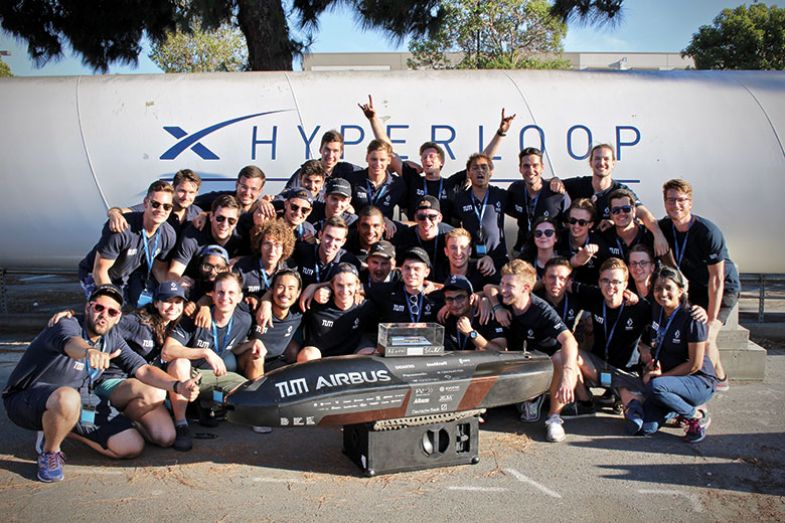Browse the full results of the World University Rankings 2020
Industry income and research are an integral part of the strategies of many universities of different sizes and types across many countries. By bringing the real-world problems of industry and commerce into an academic setting, this type of research allows institutions to have an impact on people’s daily lives in a variety of ways, bolster companies’ bottom lines across different sectors of the economy, and train students in the workplace.
The income generated by this work is also often necessary for these institutions to survive, or at the very least it helps to diversify their revenue streams beyond government grants and donations.
In this year’s Times Higher Education World University Rankings, 12 universities from eight countries share the top spot for industry income.
Institutions in China, Germany, the Netherlands, South Africa, Russia, Taiwan, the United Arab Emirates and Turkey all rank number one in the pillar, which measures a university’s ratio of industry-linked research income. This ratio is considered a proxy for knowledge transfer and the extent to which an institution’s research is finding applications outside academia. Universities that score well in this pillar are doing research that businesses are interested in – to such an extent that these businesses invest in that work rather than in in-house research and development – and from that interest deriving an important income stream.
Germany has the most top-ranked universities in this pillar, with three institutions gaining top marks. Two of these – LMU Munich and the Technical University of Munich – are located in the ancient capital of Bavaria, which is today known as a hub of science, engineering and innovation. The third – the University of Freiburg – is in Freiburg im Breisgau, a city in the south west of the country that is well known as an old university town. Turkey and China each have two universities sharing first place in the pillar.

Germany has a long tradition of industry-supported research, with industry-based and -financed projects accounting for more than two-thirds of research and development funding in the country.
There are a number of ways in which businesses and universities cooperate in the country, according to its federal Ministry of Education and Research. For example, universities often conduct contract research for companies; the private sector bankrolls research projects and jointly funds staff positions; and firms establish professorships.
With this strong tradition of collaboration between business and universities already established, institutions often take a proactive role in courting industry partnerships.
The University of Freiburg, for example, organises Science Days, which are in effect a form of speed dating for businesses and researchers. The university contacts and sets up meetings with businesses, which choose the topics or areas of science to be discussed during the meeting with academic staff.
The Technical University of Munich has an office dedicated to fostering partnerships with industry. The institution’s applied research focuses on developing concrete solutions to defined problems, while its basic research aims to further scientific knowledge.
“These mutually complementary research strands…shape the transfer of knowledge and technology to society through collaboration with industry partners,” according to the institution’s website. Annually, the university signs more than 1,000 research agreements with scientific and industry partners.

Meanwhile, on the tip of Africa, the University of the Witwatersrand in South Africa’s commercial capital of Johannesburg, once a mining boomtown, continues to rank among the top in the world in the industry pillar.
Like other institutions around the world, its revenue model involves three income streams: a government subsidy, student tuition fees and industry funds.
“The university could run its daily expenses on government subsidy and student fees alone, but it would cover only the bare basics,” says Zeblon Vilakazi, deputy vice-chancellor for research and postgraduate affairs at Wits. “[It] is dependent on third-stream income to produce quality research and new knowledge that impacts on society.”
This industry support can take multiple forms, he explains. “For example, it could come through contract research, support for research chairs and centres, projects, and unencumbered funds for use by the university.”
South Africa struggles with a chronic shortage of skills, leaving companies thirsty for research talent, which the university is able to supply, Vilakazi says.
“Wits’ location in the commercial heartland of Africa, its ability to create new knowledge that impacts on society, its reputation in developing the high-level scarce and critical skills required to transform our economy; and its commitment to social justice are some of the factors that make [the university] an investment destination for many corporates,” he adds.
The university also has wholly owned companies – Wits Enterprise and Wits Health Consortium – that are tasked with sourcing industry collaboration and funding. Wits Enterprise is a tech transfer company that seeks to commercialise the institution’s intellectual property, while the Wits Health Consortium organises clinical trials, develops health-related innovation and manages donor funding.
Khalifa University in the United Arab Emirates’ Abu Dhabi is another occupier of the top spot in this year’s industry pillar.
The university – which was recently established through a merger between the Masdar Institute of Science and Technology, the Khalifa University of Science, Technology and Research, and the Petroleum Institute – is research-intensive, with a focus on applied science and engineering.
“We need to be relevant,” says Hatem Zeineldin, senior director of Khalifa’s Masdar Institute and a fellow of the institution’s Advanced Power and Energy Center, which aims to bridge the chasm between basic research and practical application.
“The government is putting money into this centre. We need to be sure we’re not only looking at publications; we must also integrate with industry,” he adds.
In its strategic vision, the university emphasises its role in supporting the national economy through innovation and research commercialisation.
Zeineldin says universities can push the limits of research further than a company, which is why many businesses often outsource their research and development to universities.
“We try as much as possible to link our work with industry locally and internationally,” he says.
Industry income pillar
|
Rank in pillar |
Position in World University Rankings |
Institution |
Country/region |
Pillar score |
|
=1 |
1,001+ |
Turkey |
100.0 |
|
|
=1 |
801–1,000 |
Taiwan |
100.0 |
|
|
=1 |
86 |
Germany |
100.0 |
|
|
=1 |
601–800 |
Turkey |
100.0 |
|
|
=1 |
351–400 |
United Arab Emirates |
100.0 |
|
|
=1 |
=32 |
Germany |
100.0 |
|
|
=1 |
401–500 |
Russian Federation |
100.0 |
|
|
=1 |
43 |
Germany |
100.0 |
|
|
=1 |
23 |
China |
100.0 |
|
|
=1 |
59 |
Wageningen University & Research |
Netherlands |
100.0 |
|
=1 |
=194 |
South Africa |
100.0 |
|
|
=1 |
=107 |
China |
100.0 |
|
|
=13 |
20 |
United States |
99.9 |
|
|
=13 |
=110 |
South Korea |
99.9 |
|
|
=13 |
201–250 |
Moscow Institute of Physics and Technology |
Russian Federation |
99.9 |
|
=13 |
=157 |
China |
99.9 |
|
|
=17 |
=186 |
Netherlands |
99.8 |
|
|
=17 |
601–800 |
Taiwan |
99.8 |
|
|
=17 |
501–600 |
Iran |
99.8 |
|
|
20 |
=146 |
Pohang University of Science and Technology (POSTECH) |
South Korea |
99.6 |
|
21 |
601–800 |
Brazil |
99.5 |
|
|
=22 |
=94 |
Switzerland |
99.4 |
|
|
=22 |
=67 |
Netherlands |
99.4 |
|
|
=24 |
401–500 |
China |
99.3 |
|
|
=24 |
=45 |
Belgium |
99.3 |
|
|
26 |
197 |
South Korea |
98.9 |
|
|
27 |
=149 |
Germany |
98.5 |
|
|
=28 |
501–600 |
China |
98.2 |
|
|
=28 |
401–500 |
China |
98.2 |
|
|
=30 |
601–800 |
China |
98.1 |
|
|
=30 |
=99 |
Germany |
98.1 |
|
|
32 |
501–600 |
China |
97.9 |
|
|
=33 |
501–600 |
China |
97.3 |
|
|
=33 |
89 |
South Korea |
97.3 |
|
|
35 |
801–1,000 |
China |
96.9 |
|
|
36 |
601–800 |
Iran |
96.3 |
|
|
37 |
301–350 |
Belgium |
95.9 |
|
|
38 |
351–400 |
Taiwan |
94.9 |
|
|
39 |
301–350 |
Sweden |
94.8 |
|
|
40 |
601–800 |
India |
94.3 |
|
|
41 |
=157 |
Germany |
94.1 |
|
|
42 |
72 |
Canada |
94.0 |
|
|
43 |
=179 |
South Korea |
93.9 |
|
|
44 |
=105 |
Germany |
93.3 |
|
|
=45 |
=80 |
Charité – Universitätsmedizin Berlin |
Germany |
92.7 |
|
=45 |
=149 |
Germany |
92.7 |
|
|
47 |
351–400 |
South Korea |
92.3 |
|
|
48 |
401–500 |
India |
91.9 |
|
|
49 |
351–400 |
France |
91.6 |
|
|
50 |
801–1,000 |
Malaysia |
91.5 |




